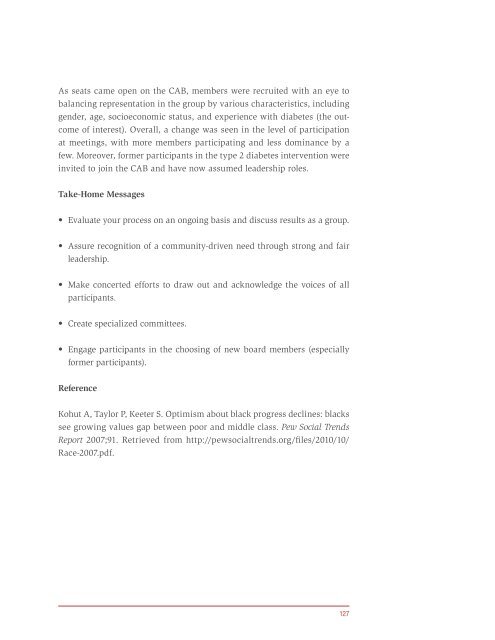Principles of Community Engagement (Second Edition)
Principles of Community Engagement (Second Edition)
Principles of Community Engagement (Second Edition)
You also want an ePaper? Increase the reach of your titles
YUMPU automatically turns print PDFs into web optimized ePapers that Google loves.
As seats came open on the CAB, members were recruited with an eye to<br />
balancing representation in the group by various characteristics, including<br />
gender, age, socioeconomic status, and experience with diabetes (the outcome<br />
<strong>of</strong> interest) Overall, a change was seen in the level <strong>of</strong> participation<br />
at meetings, with more members participating and less dominance by a<br />
few Moreover, former participants in the type 2 diabetes intervention were<br />
invited to join the CAB and have now assumed leadership roles<br />
Take-Home Messages<br />
• Evaluate your process on an ongoing basis and discuss results as a group.<br />
• Assure recognition <strong>of</strong> a community-driven need through strong and fair<br />
leadership<br />
• Make concerted efforts to draw out and acknowledge the voices <strong>of</strong> all<br />
participants<br />
• Create specialized committees.<br />
• Engage participants in the choosing <strong>of</strong> new board members (especially<br />
former participants)<br />
Reference<br />
Kohut A, Taylor P, Keeter S Optimism about black progress declines: blacks<br />
see growing values gap between poor and middle class Pew Social Trends<br />
Report 2007;91 Retrieved from http://pewsocialtrends org/files/2010/10/<br />
Race-2007 pdf<br />
127

















